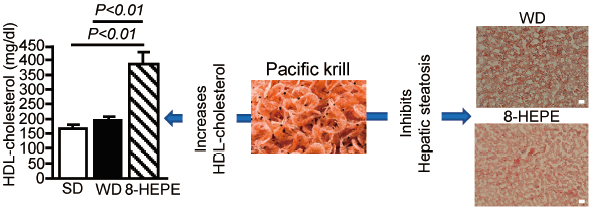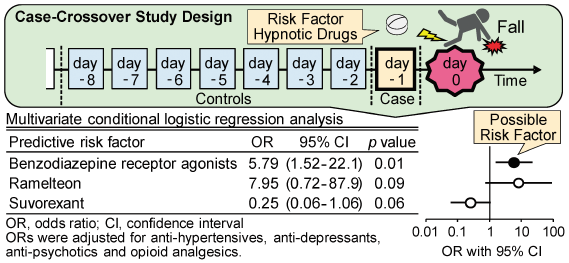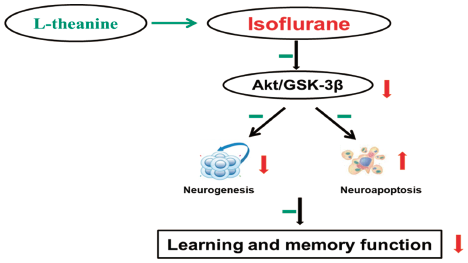- |<
- <
- 1
- >
- >|
-
2020Volume 43Issue 6 Pages 919-924
Published: June 01, 2020
Released on J-STAGE: June 01, 2020
Download PDF (1347K) Full view HTML
-
2020Volume 43Issue 6 Pages 925-931
Published: June 01, 2020
Released on J-STAGE: June 01, 2020
Download PDF (728K) Full view HTML -
 2020Volume 43Issue 6 Pages 932-937
2020Volume 43Issue 6 Pages 932-937
Published: June 01, 2020
Released on J-STAGE: June 01, 2020
Editor's pickIn the present study, Ziyuglycoside II inhibits rotavirus (RV) induced diarrhea via toll-like receptor 4 (TLR4)/nuclear factor kappa-B (NF-κB) signaling pathway. Ziyuglycoside II inhibited the proliferation of MA104 cells infected with RV via suppressing RV duplication. The combination of Ziyuglycoside II and Ribavirin protected against RV-induced diarrhea through regulating TLR4/NF-κB signaling pathway. Moreover, the combined treatment suppressed the level of pro-inflammation cytokines and overexpressed anti-inflammation cytokine. Moreover, the combined therapy improved the lesion changes and inhibited the cell apoptosis in vivo. Thus Ziyuglycoside II may function as protective role in RV-induced diarrhea.
Download PDF (3321K) Full view HTML -
2020Volume 43Issue 6 Pages 938-945
Published: June 01, 2020
Released on J-STAGE: June 01, 2020
Advance online publication: March 19, 2020Download PDF (4106K) Full view HTML -
2020Volume 43Issue 6 Pages 946-950
Published: June 01, 2020
Released on J-STAGE: June 01, 2020
Download PDF (491K) Full view HTML -
2020Volume 43Issue 6 Pages 951-958
Published: June 01, 2020
Released on J-STAGE: June 01, 2020
Download PDF (890K) Full view HTML -
 2020Volume 43Issue 6 Pages 959-967
2020Volume 43Issue 6 Pages 959-967
Published: June 01, 2020
Released on J-STAGE: June 01, 2020
Editor's pickPolygonatum sibiricum first appeared in ancient Chinese medicine books around 1000 years ago and is used to tonify the spleen and nourish the lungs. The authors present here a kind of natural polysaccharides (PSP) extracted from Polygonatum sibiricum were purified, characterized and assayed both in vitro and in vivo for its immunomodulatory activity and mechanism. It is of interest to note that PSP not only regulated the immune function of normal mice, but participated in the protection against immunosuppression in cyclophosphamide-treated mice, highlighting its potential as an immunostimulant.
Download PDF (977K) Full view HTML -
 2020Volume 43Issue 6 Pages 968-975
2020Volume 43Issue 6 Pages 968-975
Published: June 01, 2020
Released on J-STAGE: June 01, 2020
Editor's pickDanshensu (3-(3,4-dihydroxyphenyl)-(2R)-lactic acid) is one of the water-soluble active ingredients of Salvia miltiorrhizae, a traditional Chinese medicine for the treatment of cardiovascular diseases. This study investigated the protective effects of Danshensu on the acute liver injury induced by iron overload in mice. The results indicated that the underlying mechanisms at least partly involve anti-oxidation, anti-inflammation, anti-apoptosis, and decreasing hepatic iron deposition possibly through down-regulating the expression of iron uptake related proteins, such as DMT1, TfR, and L-type Ca2+ CP α1C. Therefore, they conclude Danshensu could be a promising prophylactic or therapeutic agent for iron overload diseases.
Download PDF (10442K) Full view HTML -
2020Volume 43Issue 6 Pages 976-984
Published: June 01, 2020
Released on J-STAGE: June 01, 2020
Advance online publication: March 19, 2020Download PDF (1689K) Full view HTML -
2020Volume 43Issue 6 Pages 985-993
Published: June 01, 2020
Released on J-STAGE: June 01, 2020
Download PDF (2211K) Full view HTML -
2020Volume 43Issue 6 Pages 994-999
Published: June 01, 2020
Released on J-STAGE: June 01, 2020
Download PDF (3199K) Full view HTML -
2020Volume 43Issue 6 Pages 1000-1006
Published: June 01, 2020
Released on J-STAGE: June 01, 2020
Download PDF (897K) Full view HTML -
 2020Volume 43Issue 6 Pages 1007-1015
2020Volume 43Issue 6 Pages 1007-1015
Published: June 01, 2020
Released on J-STAGE: June 01, 2020
Editor's pickThe interaction of human leukocyte antigen (HLA) with specific drugs induces structural alteration in HLA and delayed-type hypersensitivity reactions, which cause severe cutaneous toxicity. Shirayanagi et al. selected specific phage antibodies able to recognize HLA-B*57:01 and evaluated structural alterations in HLA-B*57:01 complexes induced by abacavir. The affinity of selected phage antibodies increased because of structural alterations in HLA-B*57:01 following exposure to abacavir, indicating that specific phage antibodies can identify drug-mediated structural changes in HLA complexes. These results suggest that phage display technology is a useful method for detecting structural changes in HLA complexes.
Download PDF (1343K) Full view HTML
-
2020Volume 43Issue 6 Pages 1016-1019
Published: June 01, 2020
Released on J-STAGE: June 01, 2020
Download PDF (2364K) Full view HTML -
2020Volume 43Issue 6 Pages 1020-1022
Published: June 01, 2020
Released on J-STAGE: June 01, 2020
Advance online publication: March 20, 2020Download PDF (465K) Full view HTML -
2020Volume 43Issue 6 Pages 1023-1026
Published: June 01, 2020
Released on J-STAGE: June 01, 2020
Download PDF (429K) Full view HTML
- |<
- <
- 1
- >
- >|
















